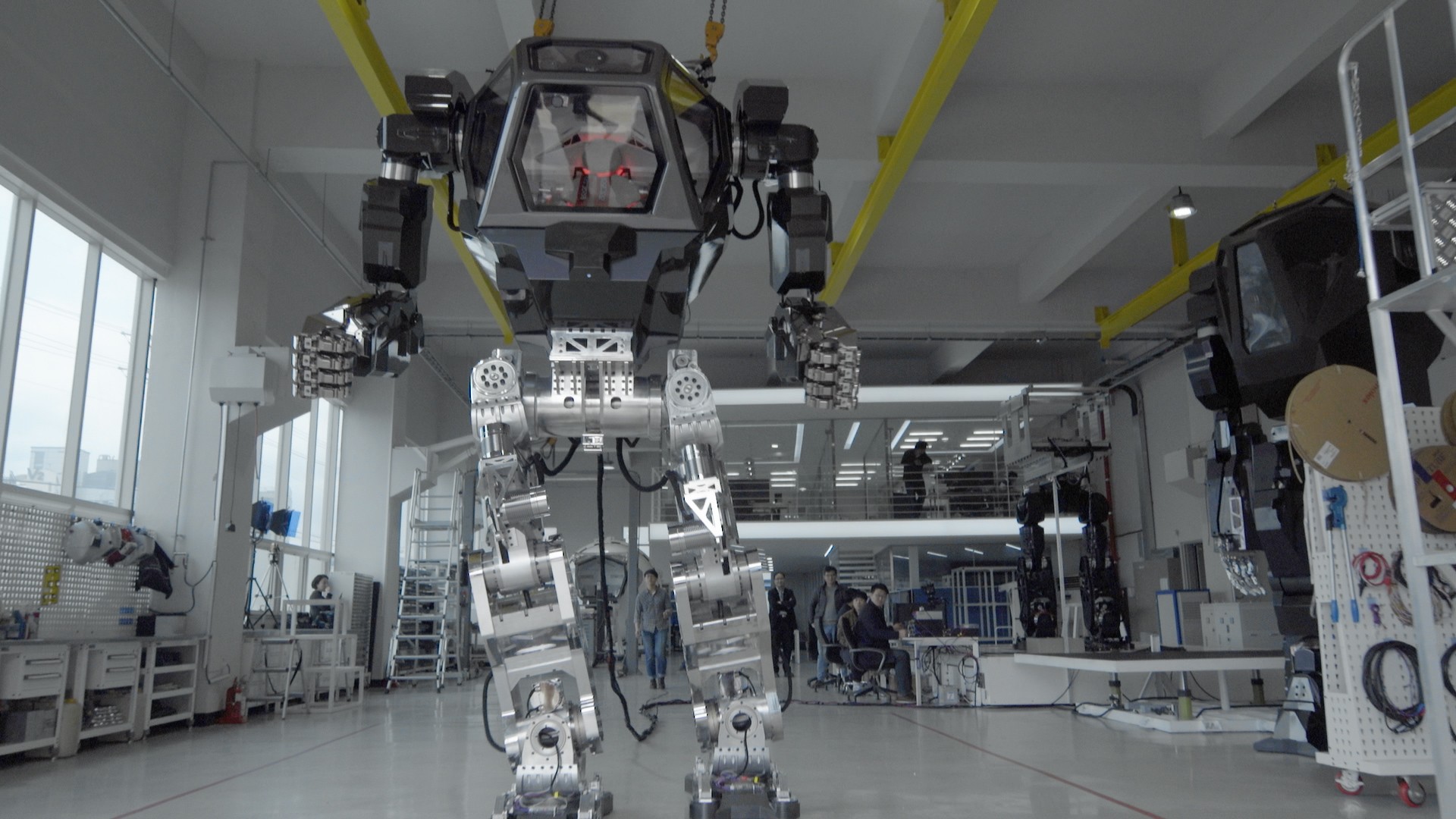Image: Netflix
The lovechild of Deadpool director Tim Miller and Fight Club director David Fincher, Netflix’s Love, Death, and Robots is an 18-part science fiction anthology about, well, love, death, or robots, or some combination of the three, rendered with punchy animation in a wide range of visual styles.Each installment, ranging from six to 17 minutes long, introduces new plots and characters, some more ridiculous than others. In “When the Yogurt Took Over,” for example, yogurt develops sentience and eventually surpasses human intelligence; in “Shape-Shifters,” the US military uses werewolf soldiers on the front lines in Afghanistan.Love, Death and Robots marks Netflix’s second stab at a science fiction anthology series after Black Mirror. But because it had already aired on the UK’s Channel 4, Black Mirror had already earned a reputation for being a smart commentary on the dangers of the future of technology. In its first season, Black Mirror creator Charlie Brooker demonstrated a knack for building dreadful worlds where technology has led us astray in realistic, often near-future worlds.The two series largely operate on two different ideas of what science fiction can do—Black Mirror is an instrument of critique of the unintended consequences of technology, while Love, Death and Robots uses science fiction as a backdrop for exciting and amusing stories. It’s clear how the shows developed these very different approaches. Brooker cites his love of the socially conscious The Twilight Zone as an inspiration for Black Mirror. Brooker said that Rod Serling “created The Twilight Zone because he was tired of having his provocative teleplays about contemporary issues routinely censored. But if he wrote about racism in a metaphorical, quasi-fictional world—suddenly he could say everything he wanted.”Meanwhile, Love, Death and Robots was inspired by the famed magazine Heavy Metal, which highlighted original science fiction stories and art, mixed in with erotica, and the raunchy, absurd 1981 film of the same name which took viewers “a step beyond science fiction.” It also pulls from the edgier, sexier comics that were popular in the 70s and 80s, such as Den, that pushed boundaries artistically and thematically with little social commentary.Black Mirror soars in episodes such as “Be Right Back,” where a woman tries to recreate her late husband’s personality by aggregating his social media accounts, that make you think about the ways technology is changing how we interact with the world.Love, Death, and Robots has many more highs and lows. Some of the most enjoyable shorts, such as “Blindspot,” an action-packed eight minutes following a crew of cyborgs pulling off a heist, or “Helping Hand,” where a space mission gone wrong forces an astronaut to sacrifice her hand in order to survive, pull you in so much that you forget that the stories are only a few minutes long.Love, Death, and Robots isn’t perfect: A lot of the nudity feels gratuitous, and a lot of the show favors style over substance.Black Mirror’s most recent installment, the choose-your-own-adventure film “Bandersnatch,” and the rollout of Love, Death and Robots, which features different configurations of the episodes for different users (triggering concern from some about how Netflix uses the data it collects), show Netflix is taking a catchall approach to science fiction programming moving forward.Both shows make the case for Netflix's decision to take chances on idea that most networks and studios otherwise wouldn’t. Love, Death, and Robots was shopped around for ten years before it came to fruition, and many of the episodes are worth your time. Love, Death, and Robots shares little with Black Mirror, but Netflix is showing that there’s room for both kinds of science fiction storytelling.
It’s clear how the shows developed these very different approaches. Brooker cites his love of the socially conscious The Twilight Zone as an inspiration for Black Mirror. Brooker said that Rod Serling “created The Twilight Zone because he was tired of having his provocative teleplays about contemporary issues routinely censored. But if he wrote about racism in a metaphorical, quasi-fictional world—suddenly he could say everything he wanted.”Meanwhile, Love, Death and Robots was inspired by the famed magazine Heavy Metal, which highlighted original science fiction stories and art, mixed in with erotica, and the raunchy, absurd 1981 film of the same name which took viewers “a step beyond science fiction.” It also pulls from the edgier, sexier comics that were popular in the 70s and 80s, such as Den, that pushed boundaries artistically and thematically with little social commentary.Black Mirror soars in episodes such as “Be Right Back,” where a woman tries to recreate her late husband’s personality by aggregating his social media accounts, that make you think about the ways technology is changing how we interact with the world.Love, Death, and Robots has many more highs and lows. Some of the most enjoyable shorts, such as “Blindspot,” an action-packed eight minutes following a crew of cyborgs pulling off a heist, or “Helping Hand,” where a space mission gone wrong forces an astronaut to sacrifice her hand in order to survive, pull you in so much that you forget that the stories are only a few minutes long.Love, Death, and Robots isn’t perfect: A lot of the nudity feels gratuitous, and a lot of the show favors style over substance.Black Mirror’s most recent installment, the choose-your-own-adventure film “Bandersnatch,” and the rollout of Love, Death and Robots, which features different configurations of the episodes for different users (triggering concern from some about how Netflix uses the data it collects), show Netflix is taking a catchall approach to science fiction programming moving forward.Both shows make the case for Netflix's decision to take chances on idea that most networks and studios otherwise wouldn’t. Love, Death, and Robots was shopped around for ten years before it came to fruition, and many of the episodes are worth your time. Love, Death, and Robots shares little with Black Mirror, but Netflix is showing that there’s room for both kinds of science fiction storytelling.
Advertisement

Advertisement